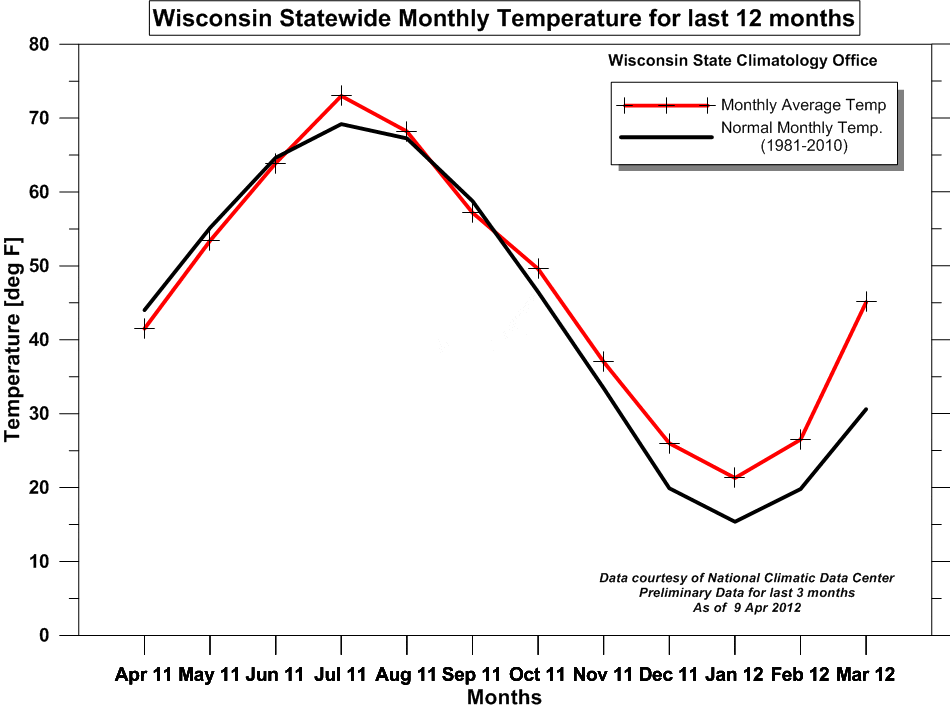Everyone has noticed how strange our spring weather has been this year. One thing you might be wondering is why this occurred, or how this weather affects the natural world. The study of the timing of natural events is called phenology. There are three main factors that affect phenology 1) sunlight 2) temperature and 3) precipitation. Some examples of phenology include when migrating birds return, when plants first flower, and when lakes freeze and reopen. It is important to keep phenological records. By keeping records it allows us to look at the changes over the years at different geographic regions. This also helps us understand interactions between organisms and their environment and the effects of climate change. The Cofrin Arboretum Center for Biodiversity keeps records of important natural events in the western Great Lakes region during all months of the year. These records can be accessed at http://www.uwgb.edu/biodiversity/phenology/. The Wisconsin State Climatology Office also holds an impressive database which you can access at http://www.aos.wisc.edu/~sco/.
Why is phenology so important? Over the years we observe that phenological events vary. Ecosystems are able to recover from variation between years but when these changes happen consistently over a long period, the timing of events (flowering, leafing, migration, and insect emergence) can impact how plants and animals thrive in their environments. The success and survival of an ecosystem depend on the timing of phenological events. For example, if the timing of emergence of leaves changes it can result in fewer seeds/insects which would impact animals that depend on those seeds/insects for food. Consider the difference in spring vegetation in the Cofrin Arboretum between May 4th of 2010 and 2011. Early leaf-out can result in a longer growing season and better habitat as long as a late freeze does not kill tender vegetation or developing flowers or fruits.

On the Wiscoonsin Statewide Monthly Temperature for the last 12 months graph it is shown that the monthly average temperature for this year is obviously higher when compared to the normal monthly temperature.

This temperature increase leads to sooner blooming of flowers and plants as well as earlier date arrivals for some migratory birds. This year the early migratory birds have to fight a little harder to survive. On the cold days when there aren’t any insects small birds have a more difficult time staying warm and full because they have nothing to eat. If they would have waited to return at their normal migration date they may not have this type of problem. Everything is inter-linked in nature and the weather plays a key role in determining what survives and what doesn’t. It will be exciting to watch this interesting weather continue throughout the year.
